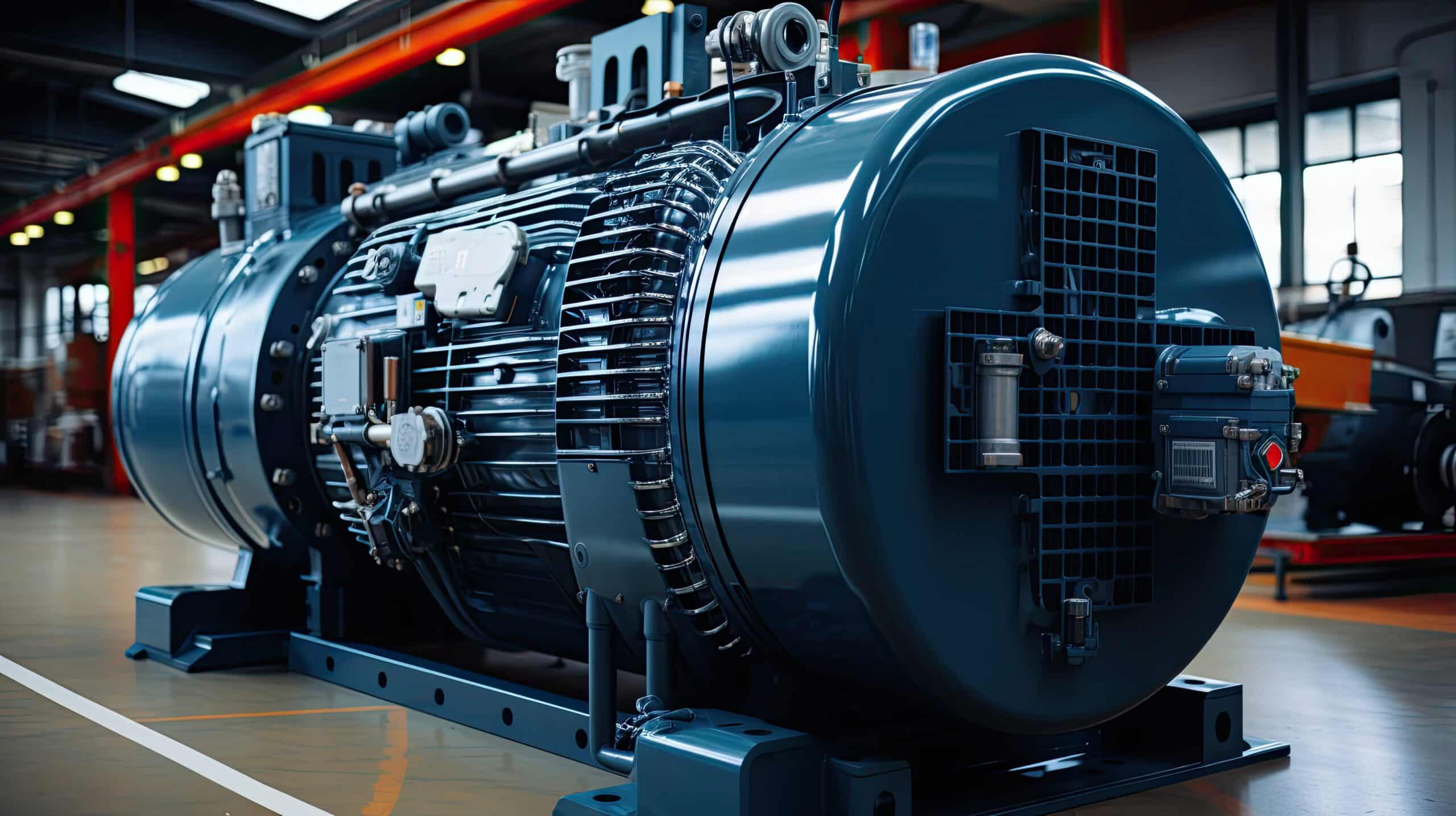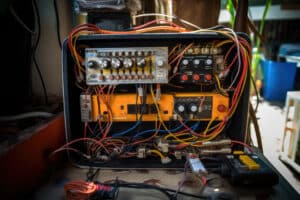How Does a Home Generator Work?
Key Takeaways
- The components of a home generator include the engine, alternator, fuel system, exhaust system, lubrication system, voltage regulator, battery, control panel, and housing.
- The process of generating electricity involves using an engine powered by a selected fuel type to generate mechanical energy, which is then used to rotate the alternator and create a rotating magnetic field that induces electrical current.
- Common fuel types for home generators include gasoline, diesel, natural gas, and propane, each with their own pros and cons.
A home generator is a valuable investment that can provide peace of mind during power outages. It is important to understand how a home generator works in order to make an informed decision when purchasing one. In this article, we will explore the different components of a home generator, the process it undergoes to produce electricity, the types of fuel it can use, and the pros and cons of each fuel type.
Components of a Home Generator
A home generator consists of several key components:
- Engine: The engine is the heart of the generator. It is typically powered by diesel, gasoline, natural gas, or propane.
- Alternator: The alternator is responsible for converting mechanical energy into electrical energy. It creates a rotating magnetic field, which induces voltage in the electrical conductors.
- Fuel System: The fuel system supplies the engine with the necessary fuel for combustion.
- Exhaust System: The exhaust system removes the byproducts of combustion, such as carbon monoxide, from the generator.
- Lubrication System: The lubrication system ensures that all moving parts of the generator are properly lubricated to reduce friction and extend the lifespan of the generator.
- Voltage Regulator: The voltage regulator ensures that the output voltage of the generator remains within a certain range, typically 120-240 volts.
- Battery: The battery provides the initial power needed to start the generator.
- Control Panel: The control panel allows the user to monitor and control the operation of the generator.
- Housing: The housing protects the generator from the elements and reduces noise.
The Process of Generating Electricity
Now that we understand the components of a home generator, let’s delve into the process it undergoes to generate electricity.
When a power outage occurs, the home generator is activated either manually or automatically. It starts by using an engine, powered by the selected fuel type, to generate mechanical energy. This mechanical energy is then used to rotate the alternator. As the alternator spins, it creates a rotating magnetic field. This rotating magnetic field induces a voltage difference in the electrical conductors of the alternator, resulting in the generation of electrical current.
The electrical current produced by the generator can be used to power various electrical devices and appliances in a home during a power outage. It is important to note that the generator needs to be properly sized to meet the electrical demands of the home. A professional electrician can help determine the appropriate generator size based on the home’s power requirements.
Types of Fuel
A home generator can run on different types of fuel, each with its own advantages and disadvantages. Here are the most common fuel types:
- Gasoline: Gasoline is readily available and easy to store. However, it has a shorter shelf life compared to other fuel types and can be volatile.
- Diesel: Diesel is more fuel-efficient than gasoline and has a longer shelf life. It is also less flammable. However, diesel generators are typically more expensive and require regular maintenance.
- Natural Gas: Natural gas is a clean-burning fuel and is often supplied through utility pipelines. It offers a continuous fuel supply without the need for refueling. However, it may not be available in all areas, and the installation of a natural gas line can be costly.
- Propane: Propane is a clean-burning fuel that can be stored for long periods without degradation. It is widely available and can be used with portable or standby generators. However, propane generators may have higher operating costs compared to natural gas generators.
Pros and Cons of Different Fuel Types
Each fuel type has its own advantages and disadvantages. Here is a summary of the pros and cons:
- Gasoline: Pros – readily available, easy to store. Cons – shorter shelf life, volatility.
- Diesel: Pros – fuel efficiency, longer shelf life, less flammable. Cons – higher cost, regular maintenance.
- Natural Gas: Pros – clean-burning, continuous fuel supply. Cons – limited availability, installation cost.
- Propane: Pros – clean-burning, long storage life. Cons – higher operating costs.
Related Websites:
- How Generators Work – Electric Generators Direct
- How Generators Work – Generator Source
- How It Works: The Components of a Standby Generator – Norwall PowerSystems
- How Does a Generator Work? – Bob Vila
- Pros and Cons of Whole House Generator Fuel Types – Sierra Pacific Home & Comfort
- Complete List of Generator Fuel Types – Woodstock Power
- Generator Fuel Types – Generator Insights
FAQs:
Q: Why are home generators important?
Home generators provide backup power during emergencies, ensuring that essential appliances and devices continue to function. They offer peace of mind by keeping your home powered, even during power outages.
Q: What types of home generators are available?
There are three main types of home generators: portable, standby, and inverter. Portable generators are versatile and can be moved around easily. Standby generators are permanently installed and automatically turn on during power outages. Inverter generators are known for their quiet operation and fuel efficiency.
Q: What fuel sources are commonly used for home generators?
Home generators commonly use gasoline, propane, or diesel as fuel sources. Each fuel type has its own advantages and considerations, such as availability, storage requirements, and runtime. It’s important to choose a fuel source that suits your needs and preferences.
Q: How does a home generator work?
A home generator consists of several components, including the engine, alternator, fuel system, and control panel. The engine turns fuel into mechanical energy, which is then converted into electrical energy by the alternator. The control panel regulates the generator’s operation. These components work together to generate electricity, providing backup power for your home.
Q: What is an automatic transfer switch (ATS)?
An automatic transfer switch (ATS) is a device that automatically switches the power source from the utility grid to the generator during a power outage. It ensures a seamless transition of power, preventing interruptions in electricity supply. The ATS plays a critical role in maintaining power continuity in your home.






